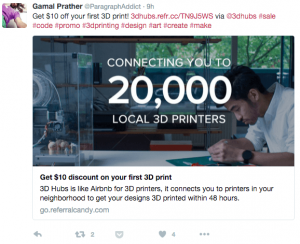If I were to interview your creative teams, what would they say about your briefing skills? Are you undaunted by this question…or do you have a nagging suspicion that their answers may not be to your liking? I ask because I have seen very few spectacular, but an awful lot of appalling briefs in my working life – and, sadly, not much in between.
The results of a bad brief are at best interesting, but not fit for purpose, and at their worst both lacklustre and inappropriate
These are the three telltale signs that you have provided a poor brief:
- You are shocked and dismayed by the first draft you receive, because you don’t like it at all.
- You don’t like the results or the amends, but you don’t know why.
- You need to go back to your creative team with endless rounds of expensive, time-consuming amends again and again.
If you are a bad briefer, then you’re certainly not alone. There are a lot of them out there – and bad briefs hurt everyone.
Firstly, they hurt the client organisation; the results of a bad brief are at best interesting, but not fit for purpose, and at their worst both lacklustre and inappropriate. And expensive – did I mention they’re expensive? When you’re working with a poor brief, it takes longer to get to the right result, which means it costs more.
Secondly, a bad creative brief hurts your agency even more than it hurts you, because your agency wants to delight you (believe me, we do).
I asked my Art Director Anna Moumtzidou about my personal briefing skills the other day, because – despite having something to say about everyone else’s – I had never really thought about my own.
“You are one of the best briefers I’ve ever worked with!” she said (I swear I’m not making this up; you can ask her yourself). I breathed a sigh of relief. So I asked Anna what she likes about the way that I brief her and we had a chat about what it is about some briefs that just doesn’t work.
Now, before I launch into our ideas to improve the nation’s briefing skills, I just wanted to explain why you should care in the first place. You should care for three reasons. Namely, writing excellent creative briefs will:
- Save you a lot of time
- Save you a lot of money
- Make the whole process more fun
So, read on to find out what we think makes a fantastic brief for whichever creative team you work with.
Top tip #1: Frontload your brief – Start with a fully formed idea
This is the step that most people leave out, because they think coming up with the creative vision is our (the creative agency’s) job. A lot of people think all they have to do is give a vague, general idea, or a collection of ideas and sign off with “something along those sort of lines, you know?”
But alas, no, we don’t know. And neither do you. Because if you have not fully imagined your idea, it’s difficult for us to do so. It’s also then impossible for us to gauge your expectations and pitch ideas in the right sort of arena. Because you didn’t really know what you wanted, you won’t like what comes back, which means that you’ll ask for loads of amends over and over again, while you use this process to get closer to what you actually do want.
I propose a radical departure from this: I suggest that you ‘frontload’ your brief instead – i.e. make sure that your idea is so well researched and thought out, that there should be minimal amends further down the line. This is also the fun bit; it’s where you get to imagine and play with your idea.
Here are some top tips on how to frontload your brief:
- When you came up with your campaign idea in the first place, you probably thought of other ideas that inspired you. If so, include jpegs of, or links to, or attachments of examples those ideas in your brief, and briefly explain what you liked about them.
- Your idea should have two elements – a functional element (in terms of what form it will take and what assets it will consist of) and a look and feel element (how it will look). Spend some time online researching both the format and the look and feel, and come up with some suggestions of how it could work and examples that you like in your brief.
- If you come up with several ideas that you’d like to combine, that’s great – explain that in your brief.
- Have a go at drawing out your idea on a bit of paper. It doesn’t matter if you can’t draw – it’s the very act of imagining what you need and how it will manifest itself that will help your creative team to get a clear idea of what you mean.
If you start by frontloading your briefs, you will have set the scene for your creative team, explaining what sort of functionality and design you’re hoping for. They will make your ideas even better in the end, and that’s mainly because you have presented them with actual, fully formed ideas to start from.
Your idea is so well researched and thought out, that there should be minimal amends further down the line
Top tip #2: Put yourself in the shoes of the people reading your creative brief
We all expect mind reading from each other without meaning to, but unfortunately none of us can do it. Once you’ve finished writing your vision for your brief, set it aside for a while – 12-24 hours, preferably – and then come back to it and pretend you are the account manager who will be reading it.
Have you omitted anything that only you know that needs to be added in? Like, for example, you need or want your vision to be produced in a particular set of colours, or you need a particular slogan to be highlighted, or you loathe illustrations and want all the artwork to be based on photographs?
If so, please do say so. This will help your creative agency come back to you with ideas that are really fit for purpose.
Once you’ve finished writing your vision for your brief, set it aside for a while
Top tip #3: Supply all the details
This is the bit where you answer all the ‘W’ questions…and one ‘H’ question. That’s the What, Who, Why, When, Where and How. Yes, it’s the least interesting part of the brief, but it is crucial. There are even hundreds of checklist / briefing form templates out there that you can just grab off the internet to help you work through these questions. At the very least, your agency really needs to know:
- Who your main stakeholders and audience are
- What outcome you are hoping to achieve, and by when
- If you want to motivate your audience to take any action, and if so, what and why?
- What your actual offer or proposition is
- How the proposition aligns with your wider marketing goals
- Who will need to sign off on what’s created
- What your deadline is, and if your outputs impact on – or are impacted by – anything else that’s going on
- If you require the end results in any particular format
This is the bit where you explain all your practical expectations and make sure that if you need something by a certain date or time and in a certain format, you’ve clearly communicated those expectations.
Do you want to motivate your audience to take any action, and if so, what and why?
And finally…
Finally, if you are a messenger delivering this brief on behalf of a large internal group, or an elusive leader within your organisation who never has any time to talk to you – the same rules still apply.
It’s no use passing down a vague Chinese whisper of what’s required to the delivery team, so I’m afraid that if you are stuck in the ‘messenger’ role, you’ll have to do all of the above and then give your brief back to the large group / elusive leader and insist they review it and sign it off before you pass it on.
Will they make changes to it? Probably. Will you get tangled up in all their ideas and thoughts and have to navigate how these can all realistically be incorporated into the overall idea? Yes. Also, welcome to our world.
Will it take ages, much longer than you realised? Indeed it will.
But you’ll be OK. You’ll get through it, and when you do, you will emerge with a signed off collective vision that’s ready to be finessed by your lovely and grateful creative team.
And – because you’ve done all the hard work of frontloading the brief and engaging all the stakeholders who need to be involved in the process early on, the actual creative bit should be a lot quicker and relatively painless. I promise!
Business & Finance Articles on Business 2 Community
(52)





